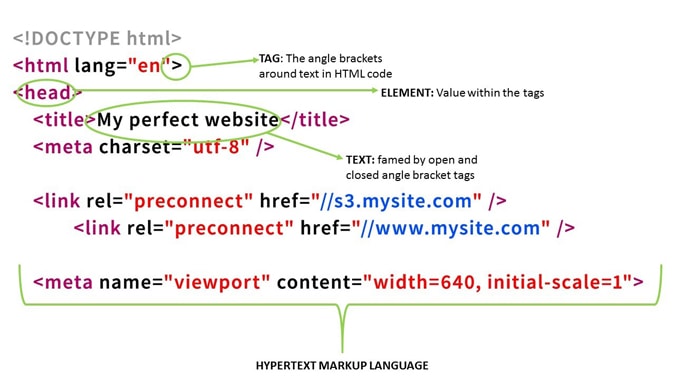Let's Talk !

We communicate in an increasingly mobile way, and because Flash cannot outfit the mobile demands of modern business, it's trailing behind in the rat race. The HTML5 vs. Flash debate is disappearing from the global conversation.
Where new elements were added to enable users to manipulate layout for greater SEO, certain esoteric CSS qualifiers were eliminated to increase ease of use. All in all, HTML5 functions with greater audio and video capabilities, and has reached a state of total interoperability.
Steve Job's public condemnation of Flash for its inferiority to HTML5 in a publication titled, "Thoughts on Flash," initiated Flash's dissent toward obsoletion. IOS's incompatibility with Flash and YouTube's shift from Flash to HTML5 for supporting videos tipped the scale further in HTML5's direction.
Here’s where we’re going if you want to jump ahead:
For nearly two decades, Flash technology was the standard for multimedia creations. On July 25th, shortly after Google's decision to no longer support Flash-based technology in ads, Adobe announced that they plan to completely kill Flash by the end of 2020.
What does this mean for the future of Flash? Because Google Chrome is now the most popular web browser, they largely dictate web development trends. And in this case, their stance poses a huge threat to Adobe, so much so that even Flash developers who were reluctant to initiate an official migration to HTML5 before are now deciding to finally migrate over. Web developers have long propagated the HTML5 vs. Flash debate, but Adobe's announcement may have brought this debate to a close and migrations to HTML to an all-time high.
Despite recent negative press, Flash still has a respectable brand following with more than three million developers depending Flash technology to meet their content creation and distribution needs. Considering Flash and HTML5 occupy similar territories, it's impossible to not view them in comparative light.
Before making the jump to HTML, it's important to understand why Flash has become an archaism, and what mechanics make HTML5 such a compelling alternative—the answer lies in interoperability.
Hypertext Markup Language (HTML) is designed to structure web documents (i.e. web pages). We understand this language as a summation of it parts—through a series of text, tags, elements and attributes, which define how web content is translated through the browser.

Text is framed by open and closed angle bracket html tags with programmed values that define the structure. For example, <title> text </title> would define the structure of the web page's title; the entity between html tags is called an element. Elements also have attributes to assign qualities such as color, font and size. HTML standards employ these basic components to program enhanced web features.
HTML5, the latest version of HTML, may have sealed the deal in the HTML vs. Flash debate, considering HTML5 operates reliably in areas where it previously struggled with adaptive rendering—broadening HTML's capacity immensely.
Where new elements were added to enable users to manipulate layout for greater SEO, certain esoteric CSS qualifiers were eliminated to increase ease of use. All in all, HTML5 functions with greater audio and video capabilities, and has reached a state of total interoperability.
The new features were designed with backward compatibility in mind. This means that even though HTML5 does away with third party add-ons, such as plug-ins and APIs, in order to run content by embedding code within the document text itself, both mobile and desktop users have the same interactive experience.
Formerly Shockwave (and before that MultiFlash),
The Flash platform hit the market 21 years ago, revolutionizing audio and video streaming, offering developers a multimedia platform with the capacity to manipulate vector and faster graphics through a language called ActionScript.
Adobe Flash isn't limited to audio and video, developers also use Flash to publish interactive websites, manufacture animations, and to develop Rich Internet Applications (RIAs). Essentially Adobe Flash gives developers the opportunity to design immersive user experiences on the web, to go above and beyond conventional standards.
Flash technologies are provided in proprietary Integrated Development Environments (IDE) complete with all the necessary authoring tools. They provide the ability to easily create and publish RIA features without much, if any, coding knowledge required. In other words, IDE's maximize interoperability.
The publishing function in Flash IDEs creates compressed Shockwave Flash files (.swf), which offer consistent performance across browsers when used with the Adobe Flash Player plug-in, a free application to channel Flash content.
Despite being somewhat rudimentary on the mobile front, Adobe Flash offers incredibly compact file formats, short download times and high quality graphics that easily adapt to different browser displays and resolutions. These features combined with a breadth of legacy support and development investment pose Flash as a viable tool for creating enhanced user experiences on the web.
ADOBE FLASH
Mature features, familiar to developers, adopted by the vast majority of legacy browsers, consistent technology across browser platforms.
Requires Adobe Flash Player plug-in to operate, frequent crashes, security issues, newer browsers are no longer supporting the Flash player, mobile browser support has been dropped altogether, halves battery life on mobile devices, incompatible with IOS, fumbles with Stage3D.
HTML5
SEO friendly, open-source language that can support Flash-like technologies, evolving interface, Adobe Canvas allows users to draw graphics, make photo collages, animations, and real-time video rendering with JavaScript, less maintenance required, secure, IOS and Android compatible, interoperability, requires less processing power because of its lightweight framework, storage options
App stores don't acknowledge HTML5, fewer offline capabilities, less than ideal gaming functionality, not fully supported by all major browsers
We communicate in an increasingly mobile way, and because Flash cannot outfit the mobile demands of modern business, it's trailing behind in the rat race. The HTML5 vs. Flash debate is disappearing from the global conversation.
The conclusion: HTML5 will eventually surpass Adobe Flash, and we can't deny it.
The facts are there. This doesn't come as a surprise to most; Steve Job's public condemnation of Flash for its inferiority to HTML5 in a publication titled, "Thoughts on Flash," initiated Flash's dissent toward obsoletion. IOS's incompatibility with Flash and YouTube's shift from Flash to HTML5 for supporting videos tipped the scale further in HTML5's direction.
A software technology group would be well-served preparing for development or migration to HTML5 from Flash for mobile and web technologies. However, maintaining Flash for superior aesthetic features and legacy assets has its merit for the time being until HTML5 is fully implemented.
Disclaimer:
Chetu does not affect the opinion of this article. Any mention of a specific software, company or individual does not constitute an endorsement from either party unless otherwise specified. This blog should not be construed as legal advice.
Founded in 2000, Chetu is a global provider of offshore software development experts, solutions and support services. Chetu's specialized technology and industry experts serve startups, SMBs, and Fortune 500 companies with an unparalleled software delivery model suited to the needs of the client. Chetu's one-stop-shop model spans the entire software technology spectrum. Headquartered in Plantation, Florida, Chetu has fourteen locations throughout the U.S. and abroad.
Privacy Policy | Legal Policy | Careers | Sitemap | Referral | Contact Us
Copyright © 2000-2024 Chetu Inc. All Rights Reserved.
